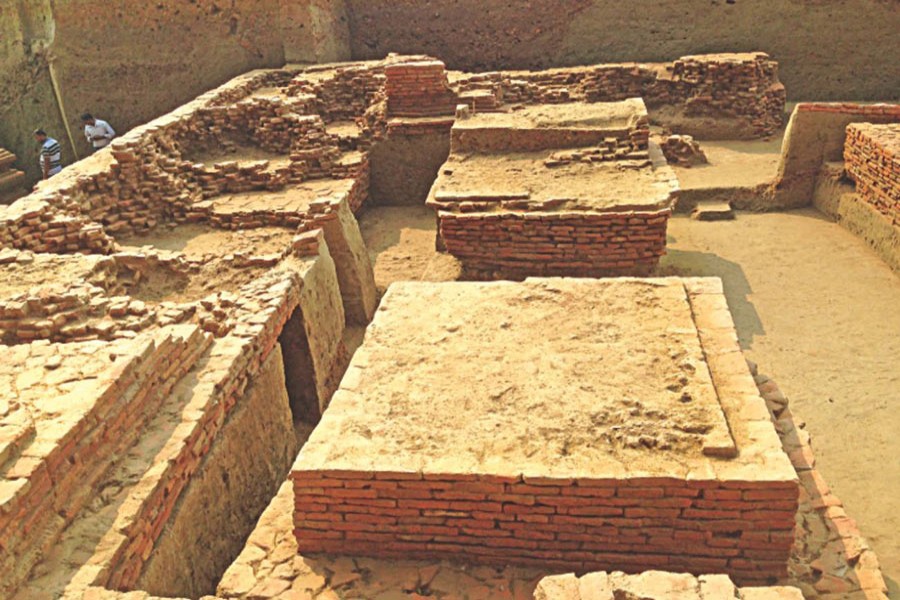A joint team of archaeologists of Bangladesh and China have unearthed an archaeological site in Bangladesh with unique architectural features.
The site contains the remains of a Buddhist town and temple at Nateshwar, the present day location of which is in the Bikrampur area of Munshiganj district, 30 km south of the capital city of Dhaka.
The archeological site is the remains of temple and city thought to be 1,000 years old.
The old ruins, still being excavated by the joint team of Bangladeshi and Chinese archaeologists, are one of the major recent archaeological discoveries in Bangladesh.
The Buddhist historical site featuring unique architectural elements has been discovered about seven meters beneath the ground. Atish Dipankar, known as a venerated Buddhist scholar and philosopher, is thought to have spent his early life here.
Deputy Chief of Mission at the Chinese embassy in Dhaka, Chen Wei, and Bangladeshi and Chinese archaeologists recently visited the excavation site.
The excavation has already unearthed several valuable artifacts from this renowned archaeological site, including a prayer hall, mortar floor, octagonal stupas, pot shreds, baked clay materials and burnt bricks.
Prof. Sufi Mostafizur Rahman, who is leading the excavation team comprised of researchers from Bangladesh and China, said carbon-14 tests on 26 unearthed relics at a Beta Laboratory in the United States had proved that the archaeological site was more than 1,100 years old.
He has sought further Chinese support to continue the excavation activities.
He expressed hope that the site, with proper conservation, will emerge as an attractive tourist site since Buddhist scholar Atisha Dipankar's ancestral house is located there.
Archeological research at the site began in 2010 and a series of significant results have been achieved since then.
It is believed that this discovery will offer interesting glimpses into the early life of Atish Dipankar. During the 10th-11th Century, he was known in Bangladesh, India, China and other Asian countries as a saint-philosopher by virtue of his unique character, erudition, scholarly attributes, and spiritual eminence.
He wrote more than 200 Buddhist books and was also known as a translator, popularized medical science and built reservoirs.
After Atish Dipankar was "rediscovered" in his motherland nearly 1,000 years after he left Bangladesh for China's Tibet to introduce the Buddha's teachings and passed away there, China offered to return part of his ashes to Bangladesh.
Both Dhaka and Beijing said Atish is now a symbol of a stronger "China-Bangladesh relationship”, reports Xinhua.


